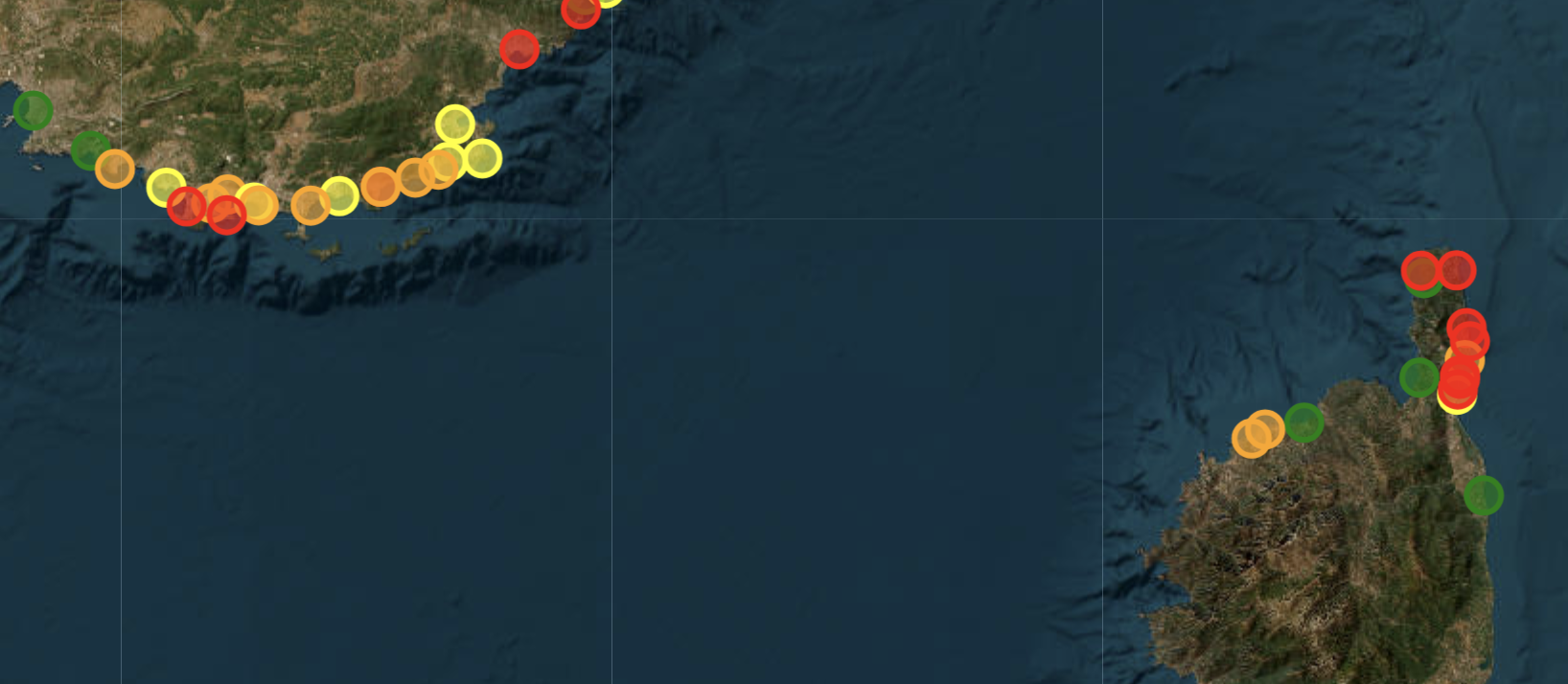Jellyfish are back in force along the French coastline! This Saturday, July 26, 2025, a massive arrival of Pelagia noctiluca, commonly known as pelagic jellyfish, has been observed along a broad stretch of the coast, from La Ciotat to Rayol-Canadel-sur-Mer, as well as on Corsican shores.
Reports are flooding in from Var, Alpes-Maritimes, and Haute-Corse, confirming an unusual and concentrated wave of jellyfish on several beaches.

Affected towns and beaches
🏖️ Le Lavandou
- Plage de Cavalière
- Plage de la Fossette
- Plage d’Aiguebelle
- Plage de Saint-Clair
- Plage de l’Anglade
- Plage du Lavandou
🏖️ Bormes-les-Mimosas
- Plage de la Favière
- Plage du Grand Jardin
- Plage de Brégançon
- Plage de l’Estagnol
🏖️ Hyères
- Plage du Pradeau (Giens Peninsula)
- Plage de la Capte
- Plage de l’Almanarre
🏖️ Saint-Raphaël
- Plage de Santa-Lucia
- Plage de Boulouris
- Plage du Veillat
🏖️ Nice, Antibes, Cannes
- Urban shoreline beaches
- Plage du Midi (Cannes)
- Plage de la Salis (Antibes)
🏖️ Corsica (Haute-Corse and Cap Corse)
- Marine de Pietracorbara
- Plage de Pietracorbara
- Plage de Tamarone (Rogliano)
- Plage de Centuri
- Plage d’Algajola
- Santa-Maria-di-Lota and San-Martino-di-Lota
Focus on Pelagia noctiluca
The Pelagia noctiluca is a stinging pelagic jellyfish, known for its bioluminescence and tentacles that can cause painful burns. It lives offshore but can be brought near the coast by wind and currents.
What to do in case of a sting?
- Exit the water immediately
- Do not rub the affected area
- Rinse only with seawater (not freshwater)
- Remove filaments with tweezers or a rigid object
- Apply a local heat source (hot, not boiling water) or vinegar as needed
Help the community: report them!
Have you seen jellyfish? Take a few seconds to report them on our interactive map. It helps other swimmers avoid unpleasant surprises!
🧴 Tip: watch swimming flags, wear goggles at sea, and keep your distance when in doubt.
— Written by the Meduseo team
